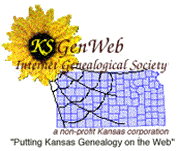Free Methodist Church
The Free Methodists have had regular work in and about Lincoln for at least 20 years.
Presbyterian Church
In 1873 Rev. H.C. Bradbury came to Lincoln for the purpose of organizing a Presbyterian church. He found three Presbyterians, Mr. and Mrs. E.B. Bishop and Miss Lizzie McNair, who served as the nucleus of the organization.
Catholic Church
The history of the Catholic Church in Lincoln county had its beginning in the mystic age of romance and discovery in the New World, back to the time of the earliest exploration in America, and as it is impossible to give the date of the first celebration of the Holy Mass in Lincoln county, we feel assured that the first priest to set foot upon the soil of the county was the padre who accompanied Francisco Vasquez DeCoronado in his exploration of the west. This was about the year 1541, and for centuries afterwards the history of the church in this county is unknown, for not until the year 1867 do we find any trace of a priest within the confines of what is now Lincoln county.
The Church of Christ
The Church of Christ at Lincoln held its first meeting for the purpose of organization under the supervision of M.P. King, evangelist, Aug. 23, 1885, at which time 18 persons enrolled as members and at a meeting in November of the same year trustees were elected. In June 1886, [can’t read] Morgans, evangelist, held a four-weeks’ meeting and the membership was increased to 63.
Methodist Church
The Methodist history in Lincoln county dates back to April 2, 1871, Brother J.N. Bartels of Salina preached the first sermon as a preacher in charge of Lincoln county and parts of Ottawa, Ellsworth, Russell and Mitchell counties. The first points that were held as regular preaching stands in Lincoln county were what is known as Rocky Hill and Elkhorn school house where many interesting services were held for many years by John Medcraft [can’t read several words] and L.A. Green. Church was also organized at the Moore school house and what was known as Colorado with about 40 members. Services were held at this point every two weeks, with very gracious results. Then came the grasshopper years of 1872-73. In 1874 organization was effected at what was known as Marton school in Ottawa county. All these were east of Lincoln. West of Lincoln there were Vesper, Sylvan Grove school houses and also at the house of Chas. Heaton on Twin Creek. The preacher was A.N. Maxon assisted by J. Medcraft and P. Barker. But with the grasshopper years everything stopped and all the preachers left except J. Medcraft who was fixed so that he could not leave. In 1872 the church was organized in Lincoln by the following charter members: John Medcraft, T.A. Mathews and wife, L. Farnsworth and wife, J.C. Parker and wife, Henry Bizick [Buzick?] and wife, Urban Farnsworth and wife and Mr. Stewart and wife.
Return to Lincoln County Kansas Genealogy main page.

Bill and Diana Sowers
, Lincoln County CoordinatorsTracee Hamilton, Lincoln County Coordinator

